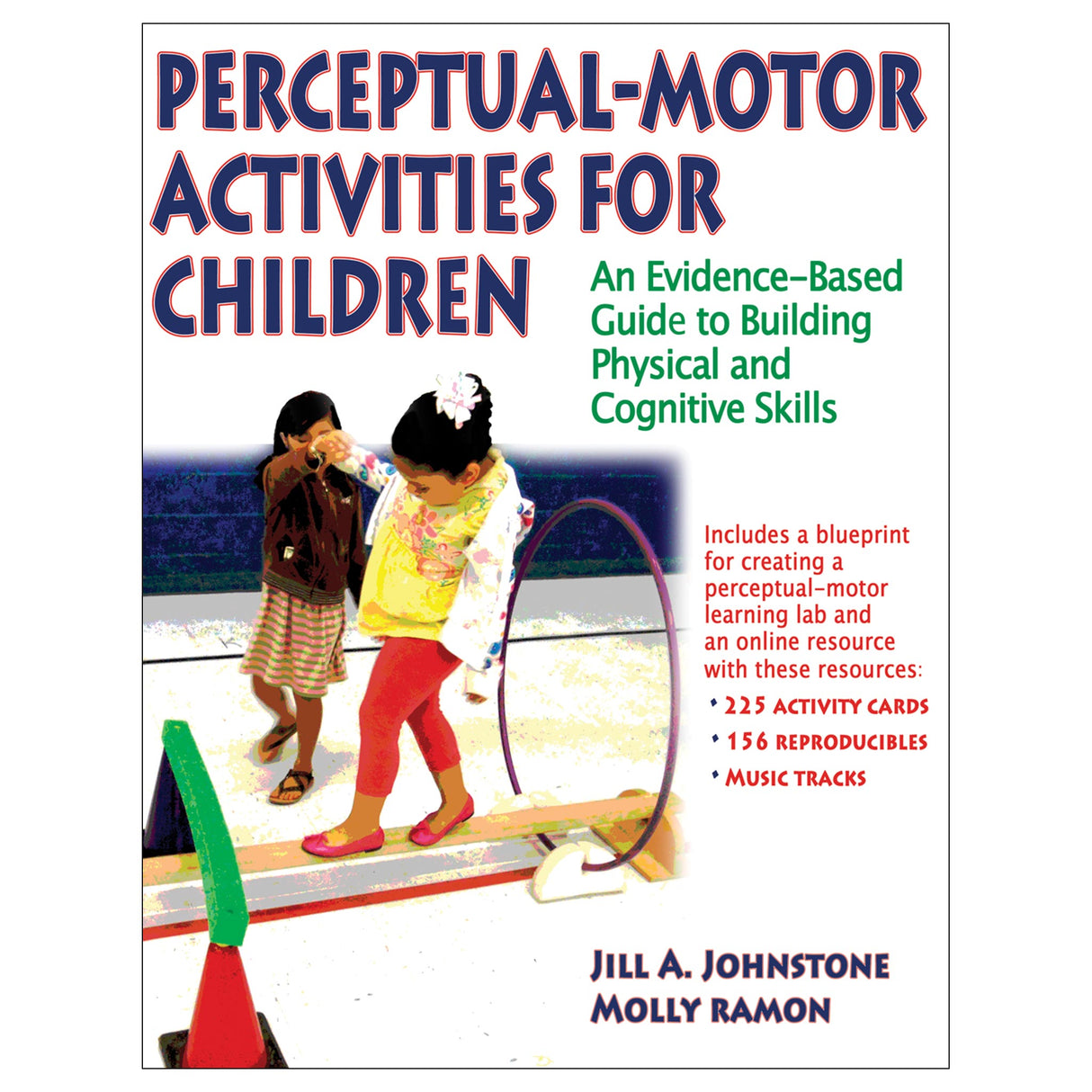Perceptual-Motor Activities for Children With Web Resource
An Evidence-Based Guide to Building Physical and Cognitive Skills
Author: Jill A. Johnstone, Molly Ramon
$19.00 CAD
Perceptual-Motor Activities for Children: An Evidence-Based Guide to Building Physical and Cognitive Skills provides a proven blueprint for improving perceptual-motor skills—the skills that require young learners to use their brains and their bodies together to accomplish tasks. When kids improve these skills, they not only improve their coordination and increase their body awareness but they also enhance their intellectual skills and gain a more positive self-image.
This easy-to-use guide outlines a 32-week program of sequential station activities that will help pre-K and elementary school-aged children in various stages of development, particularly those who are lagging behind in their perceptual-motor skills. Developed and piloted by two educators who have refined the program since 2004, this program provides all you need to create a perceptual-motor learning laboratory for your students. The book and accompanying web resource include
• 200 station activities;
• evidence-based research proving the program’s effectiveness in improving physical and cognitive skills;
• complete instructions for creating a perceptual-motor learning laboratory in a variety of learning environments;
• expert guidance in developing lateral skills, balance, body image, tracking skills, spatial relations, locomotor skills, and manipulative skills; and
• activity cards for all the activities in the book, extra activities not found in the book, full-color active learning cards to be used in the activities, a record sheet, and audio tracks.
The station activities are purposeful and can be sequenced for building a lab or used independently for targeted skill development. They are formatted as activity cards that may be posted at the stations for easy reference. The activity cards include instructions and illustrations to help you set up quickly as well as skill criteria to enable you to informally assess your students’ performances. With the activity cards handy, volunteers and even student aides can easily help with setting up and monitoring readily available activities.
If you want to use the activities in sequence, you can access four eight-week sets of lessons, progressing from bilateral skills to unilateral to cross-lateral to a combination of skills. The program enables kids to participate in the lab at least four times a week for 30 minutes per session. It also takes you through a screening process to assess current skills and needs, helping you identify students who are most at risk and establish baselines for measuring improvements.
The web resource includes all of the book’s activity cards that you may download and print as needed as well as extra activities not included in the book. The record sheet on the web resource can be saved to an electronic device so you can customize it for use with your students. Audio tracks are a powerful tool for managing the transitions between stations.
Perceptual-Motor Activities for Children will help you guide children in developing lateral skills, balance, positive body image, tracking skills, spatial relations, locomotor skills, and manipulative skills. In doing so, children will improve not only their physical skills but their emotional, social, and cognitive skills as well.
Audience
Reference for pre-K, kindergarten, and elementary physical education and adapted physical education teachers. Also a reference for directors, administrators, and classroom teachers, as well as a supplemental resource for college courses in motor learning and development and curriculum or methods courses.Chapter 1. Building a Perceptual-Motor Learning Laboratory
Chapter 2. Bilateral Activities
Chapter 3. Unilateral Activities
Chapter 4. Cross-Lateral Activities
Chapter 5. Combination Activities
Develop locomotor skills, motor planning, and spatial awareness
Develop skills through fun bilateral activities
Helping children develop to their full potential through perceptual-motor experiences
The address for the companion website is www.HumanKinetics.com/PerceptualMotorActivitiesForChildren. You must purchase the book, which includes a key code, to access these materials.





